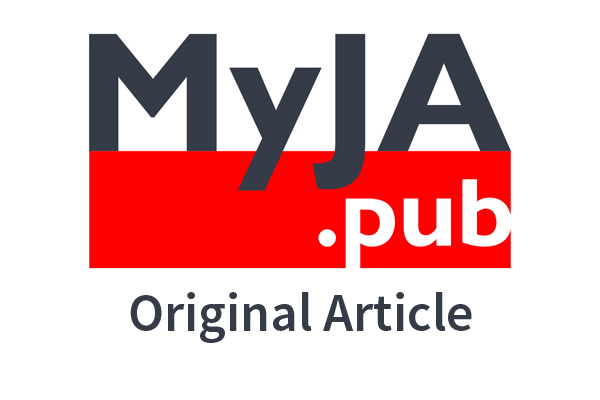Keywords
Abstract
Background: Patients with end-stage renal failure (ESRF) who require arteriovenous fistula (AVF) creation often have multiple comorbidities, making the brachial plexus block a suitable choice for anaesthesia. The objective of this study is to compare the efficacy of ultrasound-guided supraclavicular and costoclavicular brachial plexus blocks for AVF creation.
Methods: A total of 70 patients scheduled for the creation of AVF in the distal upper extremity were randomly assigned to 2 groups: supraclavicular block (SCB), Group A: n = 35, and costoclavicular block (CCB), Group B: n = 35. Both groups received 20 ml of 0.5% ropivacaine and 10 ml of 1% lidocaine. The measured parameters included the speed of onset of motor and sensory blockade, the quality of blockade, procedural-related pain score, patient satisfaction, and regional perfusion.
Results: The costoclavicular block demonstrated a significantly faster onset to achieve complete paralysis (p = 0.01) in all sensory and motor nerves compared to the supraclavicular block. Additionally, there was a significant difference in regional perfusion, with higher perfusion observed in the supraclavicular block (p = 0.013). However, there were no significant differences in the quality of block (p = 0.573), and procedural-related pain score (p = 0.117) between the 2 groups.
Conclusion: The costoclavicular block offers a faster onset of sensory and motor blockade compared to the supraclavicular block. However, they are comparable in terms of the quality of the block and procedural-related pain. This new technique can be considered as an alternative for providing anaesthesia in patients with ESRF
undergoing AVF creation.
References
Oh C, Noh C, Eom H, et al. Costoclavicular brachial plexus block reduces hemidiaphragmatic paralysis more than supraclavicular brachial plexus block: retrospective, propensity score matched cohort study. Korean J Pain. 2020 Apr 4;33(2):144. https://doi.org/10.3344/kjp.2020.33.2.144
Yang CW, Kwon HU, Cho CK, et al. A comparison of infraclavicular and supraclavicular approaches to the brachial plexus using neurostimulation. Korean J Anesthesiol. 2010 Mar;58(3):260. https://doi.org/10.4097/kjae.2010.58.3.260
Albrecht E, Mermoud J, Fournier N, Kern C, Kirkham KR. A systematic review of ultrasound-guided methods for brachial plexus blockade. Anaesthesia. 2016 Feb;71(2):213-27. https://doi.org/10.1111/anae.13347
Luo Q, Yao W, Shu H, Zhong M. Double-injection technique assisted by a nerve stimulator for ultrasound-guided supraclavicular brachial plexus block results in better distal sensory–motor block: A randomised controlled trial. Eur J Anaesthesiol. 2017 Mar 1;34(3):127-34. https://doi.org/10.1097/EJA.0000000000000542
Karmakar MK, Sala-Blanch X, Songthamwat B, Tsui BC. Benefits of the costoclavicular space for ultrasound-guided infraclavicular brachial plexus block: description of a costoclavicular approach. Reg Anesth Pain Med. 2015 May 1;40(3):287-8. https://doi.org/10.1097/AAP.0000000000000822
Sala-Blanch X, Reina MA, Pangthipampai P, Karmakar MK. Anatomic basis for brachial plexus block at the costoclavicular space: a cadaver anatomic study. Reg Anesth Pain Med. 2016 May 1;41(3):387-91. https://doi.org/10.1097/AAP.0000000000000393
Li JW, Songthamwat B, Samy W, Sala-Blanch X, Karmakar MK. Ultrasound-guided costoclavicular brachial plexus block: sonoanatomy, technique, and block dynamics. Reg Anesth Pain Med. 2017 Mar 1;42(2):233-40. https://doi.org/10.1097/AAP.0000000000000566
Fredrickson MJ, Patel A, Young S, Chinchanwala S. Speed of onset of ‘corner pocket supraclavicular and infraclavicular ultrasound guided brachial plexus block: a randomised observer-blinded comparison. Anaesthesia. 2009 Jul;64(7):738-44. https://doi.org/10.1111/j.1365-2044.2009.05918.x
Shemesh D, Olsha O, Orkin D, et al. Sympathectomy-like effects of brachial plexus block in arteriovenous access surgery. Ultrasound Med Biol. 2006 Jun 1;32(6):817-22. https://doi.org/10.1016/j.ultrasmedbio.2006.02.1420
Meena S, Arya V, Sen I, Minz M, Prakash M. Ultrasound-guided supraclavicular brachial plexus anaesthesia improves arteriovenous fistula flow characteristics in end-stage renal disease patients. South Afr J Anaesth Analg. 2015 Sep 3;21(5):131-4. https://doi.org/10.1080/22201181.2015.1075764
Demondion X, Herbinet P, Boutry N, Fontaine C, Cotton A. Sonographic mapping of a normal brachial plexus. AJNR Am J Neuroradiol. 2003.
Koscielniak-Nielsen ZJ, Frederiksen BS, Rasmussen H, Hesselbjerg L. A comparison of ultrasound-guided supraclavicular and infraclavicular blocks for upper extremity surgery. Acta Anaesthesiol Scand. 2009 May;53(5):620-6. https://doi.org/10.1111/j.1399-6576.2009.01909.x
Royse CF, Sha S, Soeding PF, Royse AG. Anatomical study of the brachial plexus using surface ultrasound. Anaesth Intensive Care. 2006 Apr;34(2):203-10. https://doi.org/10.1177/0310057X0603400212
Yang CW, Kwon HU, Cho CK, et al. A comparison of infraclavicular and supraclavicular approaches to the brachial plexus using neurostimulation. Korean J Anesthesiol. 2010 Mar;58(3):260. https://doi.org/10.4097/kjae.2010.58.3.260
Arcand G, Williams SR, Chouinard P, et al. Ultrasound-guided infraclavicular versus supraclavicular block. Anesth Analg. 2005 Sep 1;101(3):886-90. https://doi.org/10.1213/01.ANE.0000159168.69934.CC
Sahin L, Gul R, Mizrak A, et al. Ultrasound-guided infraclavicular brachial plexus block enhances postoperative blood flow in arteriovenous fistulas. J Vasc Surg. 2011 Sep 1;54(3):749-53. https://doi.org/10.1016/j.jvs.2010.12.045






